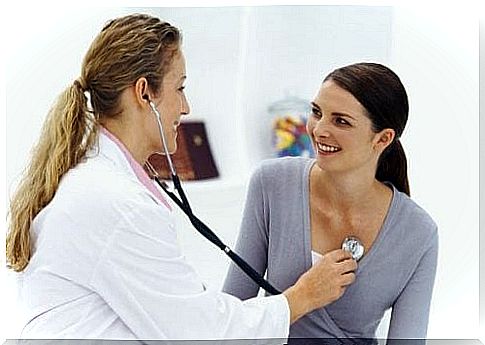Major Non-Cancerous Breast Diseases

Early diagnosis and treatment of breast diseases is essential. Therefore, knowing the main breast anomalies and diseases can help a lot to identify them if necessary.
The breasts undergo changes during the different phases of a woman’s life and fulfill the function of feeding the children, thus establishing a unique connection. But they also require care and face risks. Today we will present the main benign breast diseases, teach how to detect them and their possible treatments.
From the beginning, it is important to point out that most breast diseases are benign, that is, non-cancerous. However, this does not mean that we can abandon care regarding the relevant controls to detect any abnormality related to breast cancer.
Most frequent benign breast diseases
According to the American Cancer Society, these are the most common benign breast diseases:
1.- Mastitis
Mastitis is inflammation of the breast, usually caused by an infection. It happens in lactating women (most of the time) as non-lactating. It is usually treated with antibiotics.
2.- Fibrosis and cysts
Many breast lumps are caused by changes in the breast tissue, especially during childbearing years. They are detected by inflammation or hypersensitivity. They usually disappear over time, although it is possible to extract the fluid using a needle through surgery, as it can reappear or cause painful symptoms.
3.- Adenosis
It is the presence of more milk-producing glands (mammary lobe) than normal and larger. It tends to cause pain and disappear after a while. However, professional follow-up is recommended.

4.- Fatty breast necrosis and oily cysts
It occurs when fat tissue is damaged. It can occur after surgery or radiation treatment to the breast. An oily cyst is a case of fatty fluid that forms instead of healing a wound. It can cause bulging and reddening, but it doesn’t cause pain. They are usually untreated, but may need a biopsy to ensure that there are no cancer cells present.
5.- Fibroadenoma of the breast
They are non-cancerous tumors composed of glandular tissue and connective tissue. They are most common between 20 and 40 years of age and, to the touch, resemble a marble inside the breast. Some are palpable and others are detected through a mammogram or ultrasound. If they don’t grow and the doctors are sure they’re not the product of another disease, they’re left until they disappear. Otherwise, for prevention, they are removed.
6.- Breast hyperplasia
It is the overgrowth of the cells that line the ducts or mammary glands. It does not produce lumps and is detected through mammograms or biopsies. Unlike the previous ones, atypical hyperplasia (one of the types in which the cells are more distorted) increases the possibility of developing breast cancer. When there is a risk, the surrounding tissue must be removed.
7.- Locular carcinoma in situ
Also known as lobular neoplasm. It is the growth of cancer cells in the milk-producing glands, even though they do not cross the lobes. It doesn’t cause swelling or pain, so it’s detected through a biopsy done for some other breast problem. This condition also increases the risk of breast cancer.
8.- Intraductal papillomas
They are benign wart-like tumors that grow in the milk ducts. They can be solitary (cause fluid secretions) or multiple. They are detected with mammography or ultrasound. If they are large, a biopsy is also performed . They do not by themselves increase the risk of cancer, but they do if followed by some other condition, such as atypical hyperplasia.

How to reduce the risk of breast disease?
To reduce the chances of developing any of these breast diseases, the Spanish Association Against Cancer (AECC) recommends following the following advice :
- Maintain a healthy diet and weight. Both factors have been shown to influence the chances of getting cancer during adulthood.
- Staying physically active. This can be done through moderate or intense physical activities.
- Avoid drinking alcoholic beverages.
- Breastfeed. The AECC states that breastfeeding is a choice capable of preventing this disease.
- Prescription drugs, for women at higher risk of developing breast cancer.
- Preventive surgery, when an important danger of suffering from this disease is detected.
As a final recommendation, we suggest that you do n’t be afraid to test when necessary. In addition to being painless, they are essential for the proper treatment of any condition that may be encountered.
Remember that standing with your arms crossed will not help. In case of any doubts or discomfort, consult your doctor without thinking twice.








